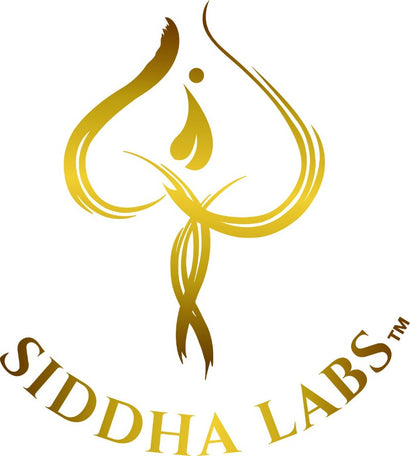How does Āyurveda understand symptoms of SARS-CoV-2?

While western medicine is fixated on naming diseases and finding one treatment protocol for the varying symptomatology such as vaccination, the Āyurvedic perspective does not require a previous encounter with a pathology to treat it nor does it use a one-size-fits-all approach. Ayurveda guides us to use foundational principles for intelligent disease management by investigation of pathogenesis or saṃprāpti and resulting symptomatology as it manifests in the individual. We can apply these principles to better understand SARS-CoV-2 and what effective management might look like.
The principle concern and cause for renaming of this virus is the pneumonia and severe difficulty breathing (śvās) that develops in a very small percentage of those infected.
From an Āyurvedic perspective this can be viewed as kapha blocking vāta in prāṇa vaha srotas.
Prāṇa vaha srotas refers to that those pathways which conduct or move prāṇa throughout the body.
According to Dr. Vasant Lad the root, pathway, and opening of prāṇa vaha srotas are as follows
Mūla: left chamber of heart (hṛdayam), gi tract
Marga: 10 great vessels (arteries which transport nutrients)
Mukha: nose (nāsā)
This makes sense when we recall prāṇa is absorbed through our heart, lungs, and food, and is distributed via the arterial bloodstream. Further the nose is what we should be breathing through, not our mouths, and is considered the primary entry and exit point of our breath. Why the left chamber of the heart as the mūla? Because this is the entry point for oxygen rich blood from the lungs which is then pumped to the rest of our bodies.
Srotas refers to a passage, path, or stream, and we have many different systems of srotas in the body. Each srota has a mūla (origin), marga (passage), and mukha (exit/opening).
The Caraka Samhitā, a primary text of Āyurveda, describes the 4 types of abnormalities (srotoduṣṭi) which may arise due to compromised function of the srotas.
1)Ati pravṛttiḥ- excess flow such as diarrhea
2)Sanga- obstruction
3)Vimarga gamanam- wrong flow, false passage
4)Sirā granthi- growth as in swelling of tumor
The first 2 indicate functional disorders of the srotas and are common features of SARS-CoV-2.
Let us examine these symptoms from the Āyurvedic perspective. Symptoms reported include
Fever
Diarrhea
Loss of sense of smell
Malaise
Dry cough
Difficulty breathing in a small percentage of severe cases
Diarrhea and loss of sense of smell
Microbiota play a tremendous role in promoting and calibrating all aspects of the immune system, and our “guts” or microbiomes are a critical point of defense against viral invaders, housing 70% of our immune systems (1). Sanskrit literature reflects the role our guts play in immunity by describing the primary function of samāna vāyu as “viveka”, or discrimination. When a virus enters our bodies, these commensal bacteria are on first watch as our guts are their homes and helping secure our health simultaneously supports their survival.
Diarrhea may result from our bodies trying to expel the virus, and digestion is shut down as our organisms now shift their internal resources to immune defense. A resultant loss of sense of smell helps relieve us of the desire to eat, which is desirable because when digestive power (agni) is diminished eating may result in the formation of toxins (āma) within the body. Thus reduced sense of smell helps suppress our appetites as our bodies are now otherwise engaged. If you are able to notice this and start supplementing with herbs immediately this may be helpful in reducing the severity of symptomatology one experiences.
Fever and Malaise
Called jvara in Sanskrit, fever is an indicator that toxins are circulating within the body in rasa dhātu. Loosely translated as plasma fluid, rasa is the first tissue to be formed from food, called āhāra rasa thus illustrating its intimate connection to rasa. Fever is managed by burning out toxins within the body and is facilitated by our organism’s loss of appetite and increased body temperature.
Of further interest is that our stomachs are called āmaśaya in Sanskrit, indicating the relationship between āma and digestive capacity. Āma, or toxins, cloud our cellular intelligence, and in this case denotes the confusion created when viruses enter our bodies as our immune systems must interpret what is self and not-self. Viruses, in contrast to bacteria, require host cells to reproduce, and their entry acts as a signal for “sorting” to rapidly occur lest the virus overtake us and decimate the host organism completely. This is no small task, and no wonder that we feel tired when we consider the immensity of such an undertaking in a body comprised of trillions of cells!
Dry cough and difficulty breathing
Known as khās and śvās respectively, cough and difficulty breathing are the most feared aspects of this virus. To understand what is happening doṣically, let us recall that kapha is comprised of earth and water, and has the following guṇas.
Snigdha- oiliness, unctuousness
Śita- cold
Guru- heavy
Manda- dull
Ślakshna- smooth
Mrtsnah- greasy
Sthira- stable
Hima- cold
Mrdu- soft
Why is understanding the guṇas so important? Identifying the guṇas at play allows us to employ opposite qualities to bring about relief of symptomatology. Difficulty breathing is caused by blockage of the lungs by heavy, cold, and oiliness that may become hard or heavy. This blocks our airways and thus vāta doṣa, so we look to medicines or auṣadhi that have the opposite qualities to create balance much like we use hot mixed with cold to create warm. Classically this means we employ herbs that have hot (uṣṇa), sharp (tīkṣṇa), and penetrating qualities as well as those that support correct movement of vāta doṣa. Further examination reveals this pathology is primarily located in urdhva sthāna, or the upper portions of the body, and this information may be used to refine modes of administration of medicines. It is also important to understand that the stomach and lungs are primary sthānas or sites of kapha doṣa.
Management
The number of remedies that can be used in such treatment are vast and limited primarily by accessibility. Common herbs that may be suitable to support kapha blocking vāta in the lungs may include
Tulsi
Cinnamon
Cloves
Cardamom
Ginger
Turmeric
Black pepper
Pippalī
Honey
Sitopalādī
Sitopalādī is a traditional preparation containing a number of the aforementioned herbs and has an affinity for the respiratory tract thus making it a good choice under the guidance of a qualified Vaidya or practitioner of Āyurveda.
This list is by no means exhaustive but is meant to give you an understanding of the principles employed in treatment of such conditions.
Preventive care
The pathology of SARS-COV2 produces kapha symptoms in kapha sites of the body, and springtime may be a kapha season depending on the deśa, or climate, in which one resides. Thus it behooves one to follow a kapha pacifying diet and lifestyle during this time. Āyurveda teaches us that our daily routines must shift according to climate and prakṛti, so simple steps to be taken may include
Cooking all food lightly
Favoring soupy, well spiced, easy to digest foods
Avoidance of wheat, dairy products, and cold foods
Prāṇāyāma practices of bhastrika and kapālabhātī
Teas such as tulsi, ginger, and lemon honey
It's also good practice to AVOID foods with sticky and heavy quality if you are worried about your lung health as eating stick and heavy foods exacerbates those conditions in the body.
However these measures should not be construed as a substitute for a healthy lifestyle which promotes healthy ojas and immunity year round. Viruses will continue to circulate across borders as long as the human race continues to move about, and vaccines are but a symptomatic treatment. Sanskrit literature teaches us it is best to arm yourself with habits that promote strength and vibrancy daily, undergo seasonal cleansing therapies such as pañcakarma, and surround yourself with beings of high vibration such as found in the presence of a Sadguru.
“As the bees collect honey from the fruits and flowers, ojas is similarly collected in the body by the actions, qualities, habits, and diet of the human being.” Ca:SU 17:76
Please note this article is not intended to diagnose, cure, or treat any disease. If you are having a medical emergency please call your doctor or dial 911.
Citations
1)Role of the Microbiota in Immunity and inflammation
Yasmine Belkaid, Timothy Hand
Cell. Author manuscript; available in PMC 2015 Mar 27.
Published in final edited form as: Cell. 2014 Mar 27; 157(1): 121–141. doi: 10.1016/j.cell.2014.03.011
https://www.ncbi.nlm.nih.gov/pmc/articles/PMC4056765/
Caraka Samhitā
Copyright 2020 Sarah Otto-Combs
Leave a comment
Comments will be approved before showing up.
Also in Unlock radiant wellbeing with the Āyurvedic perspective on food, self-care, and more!



